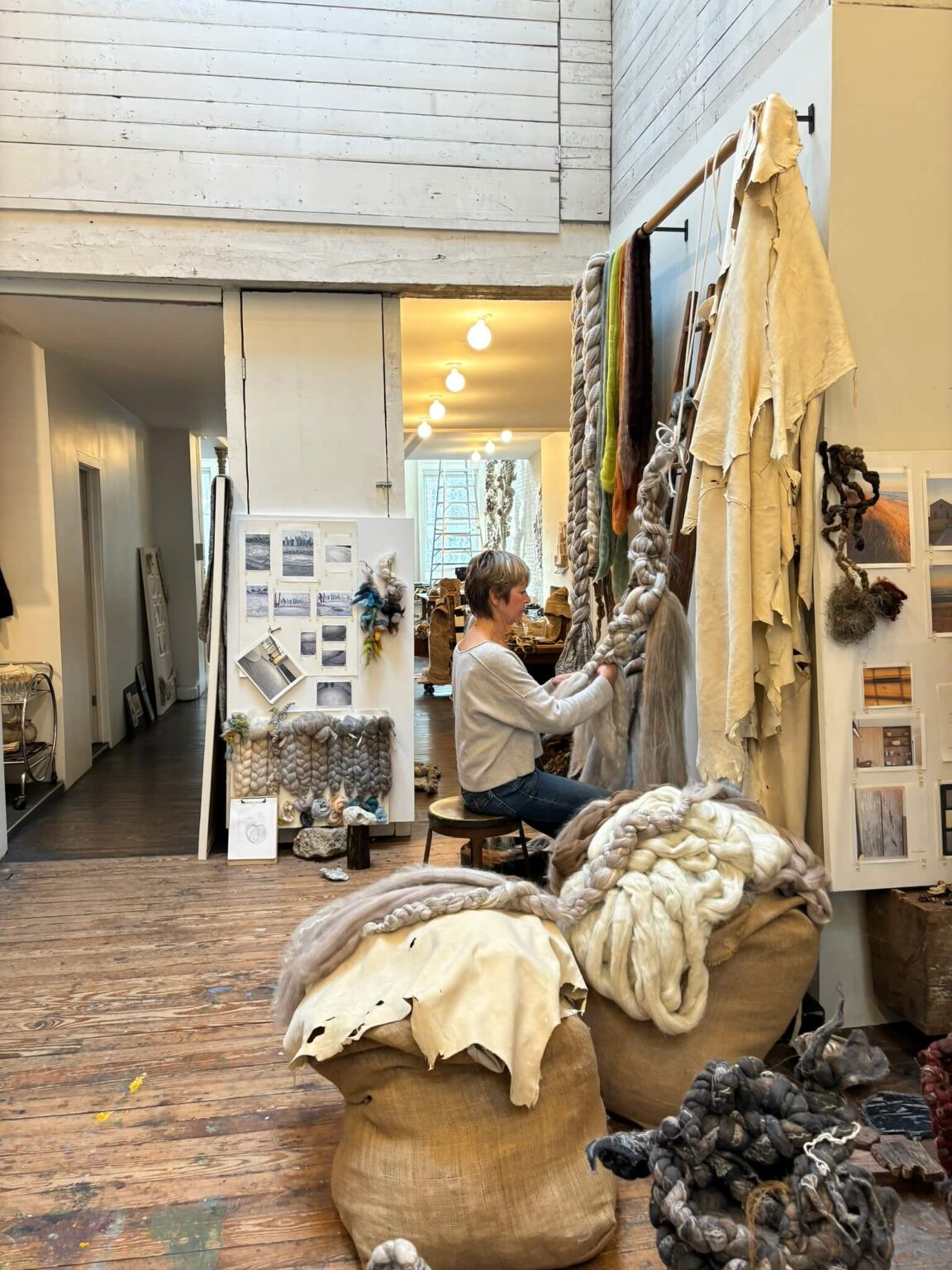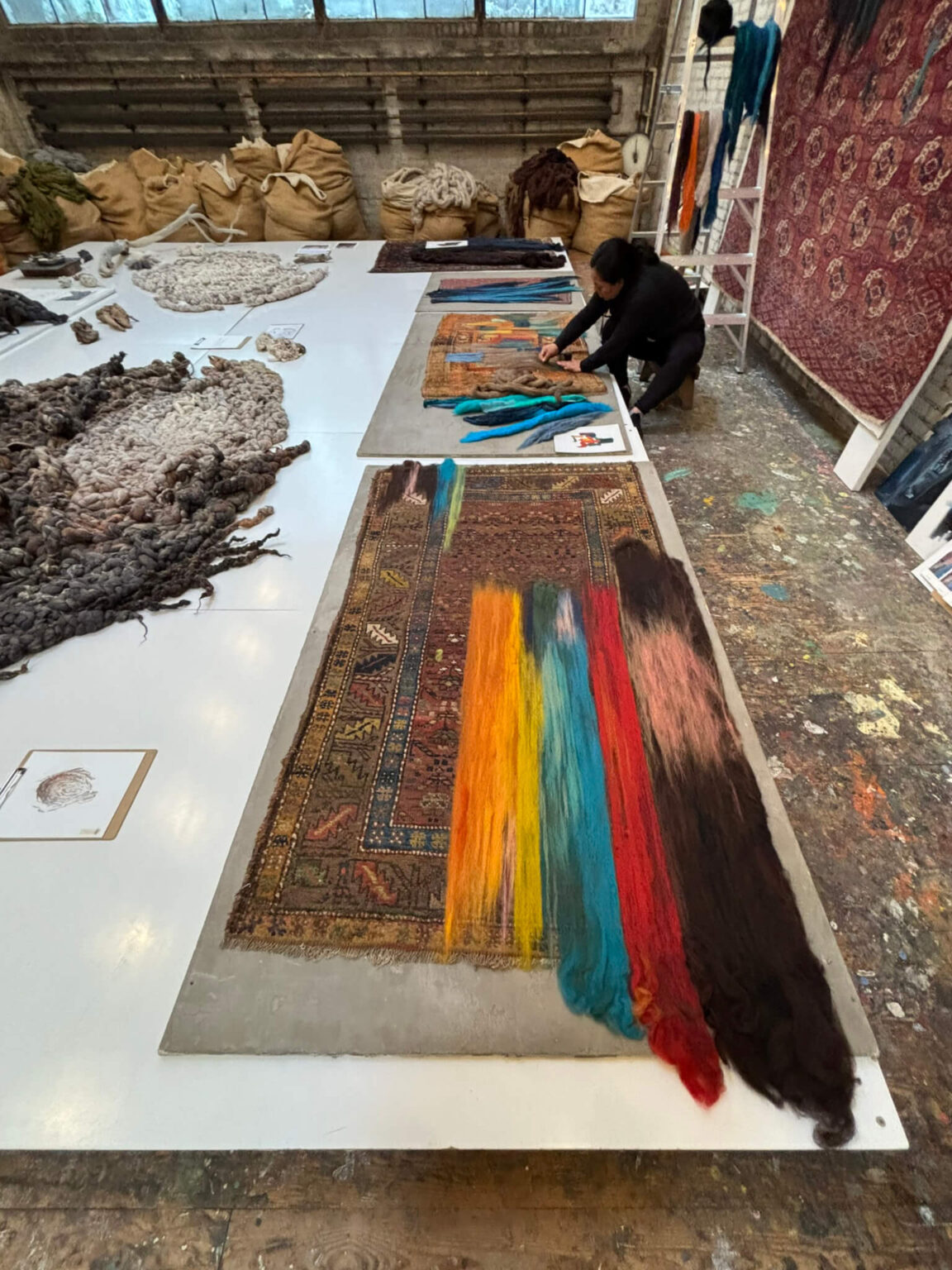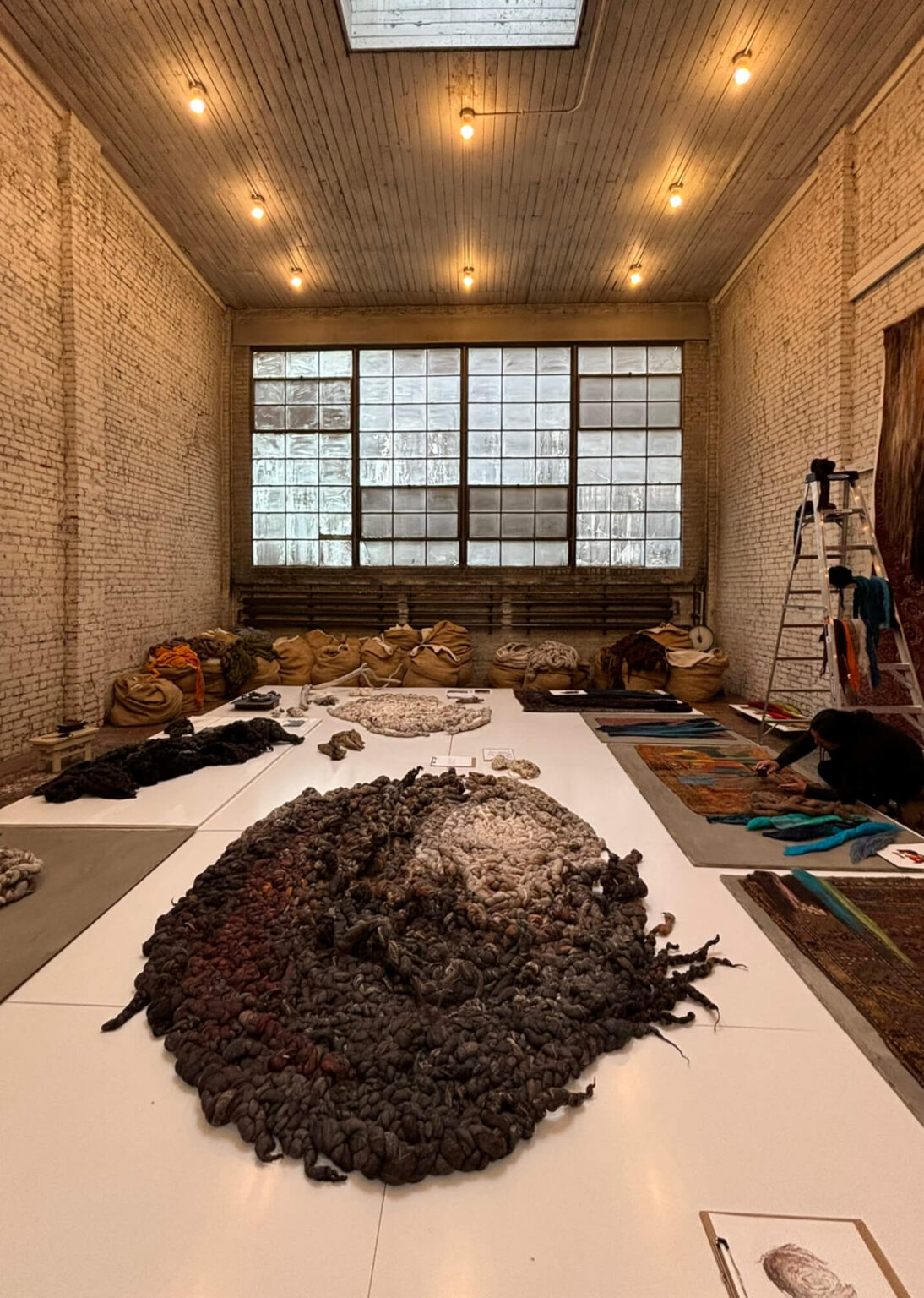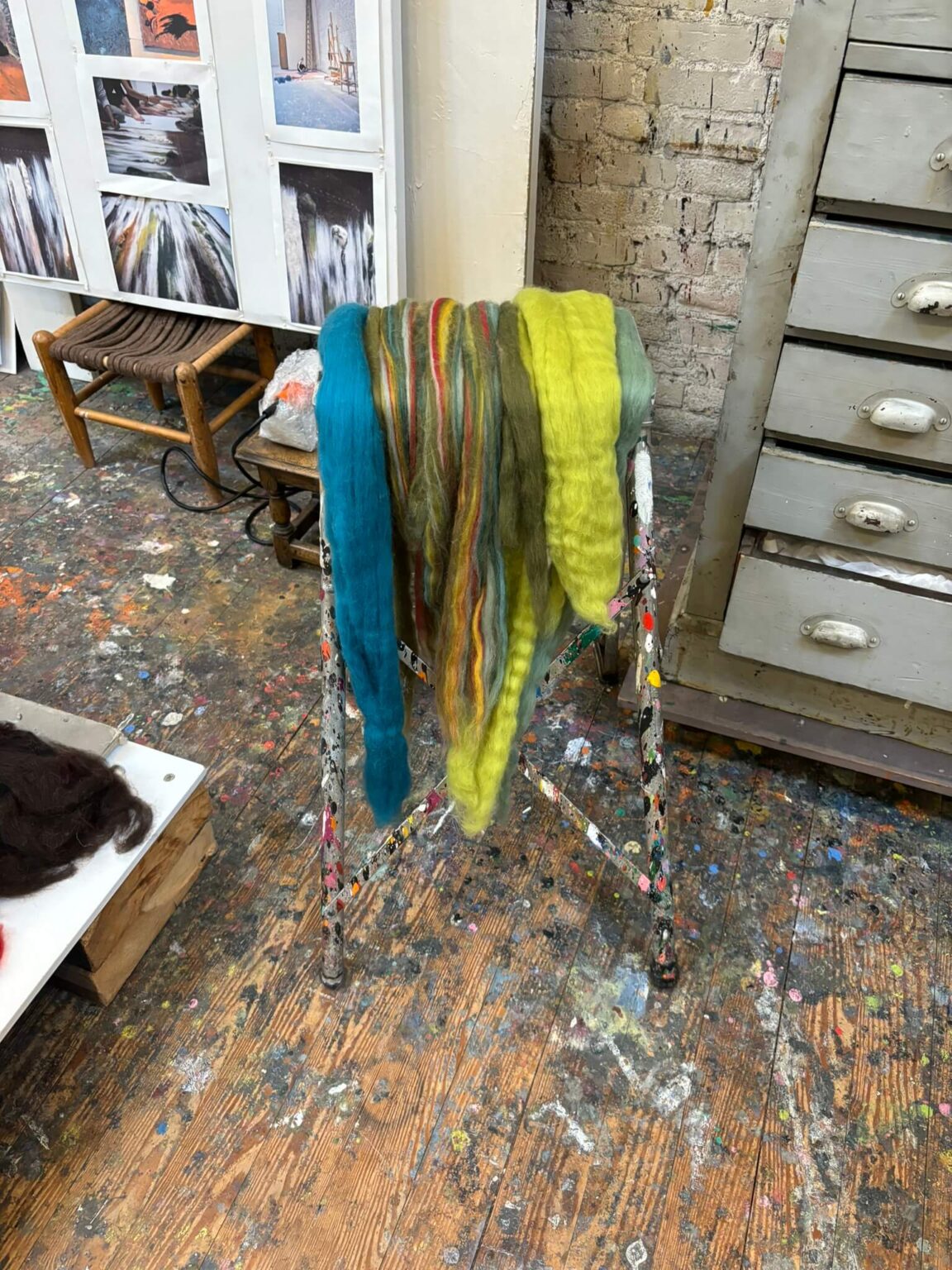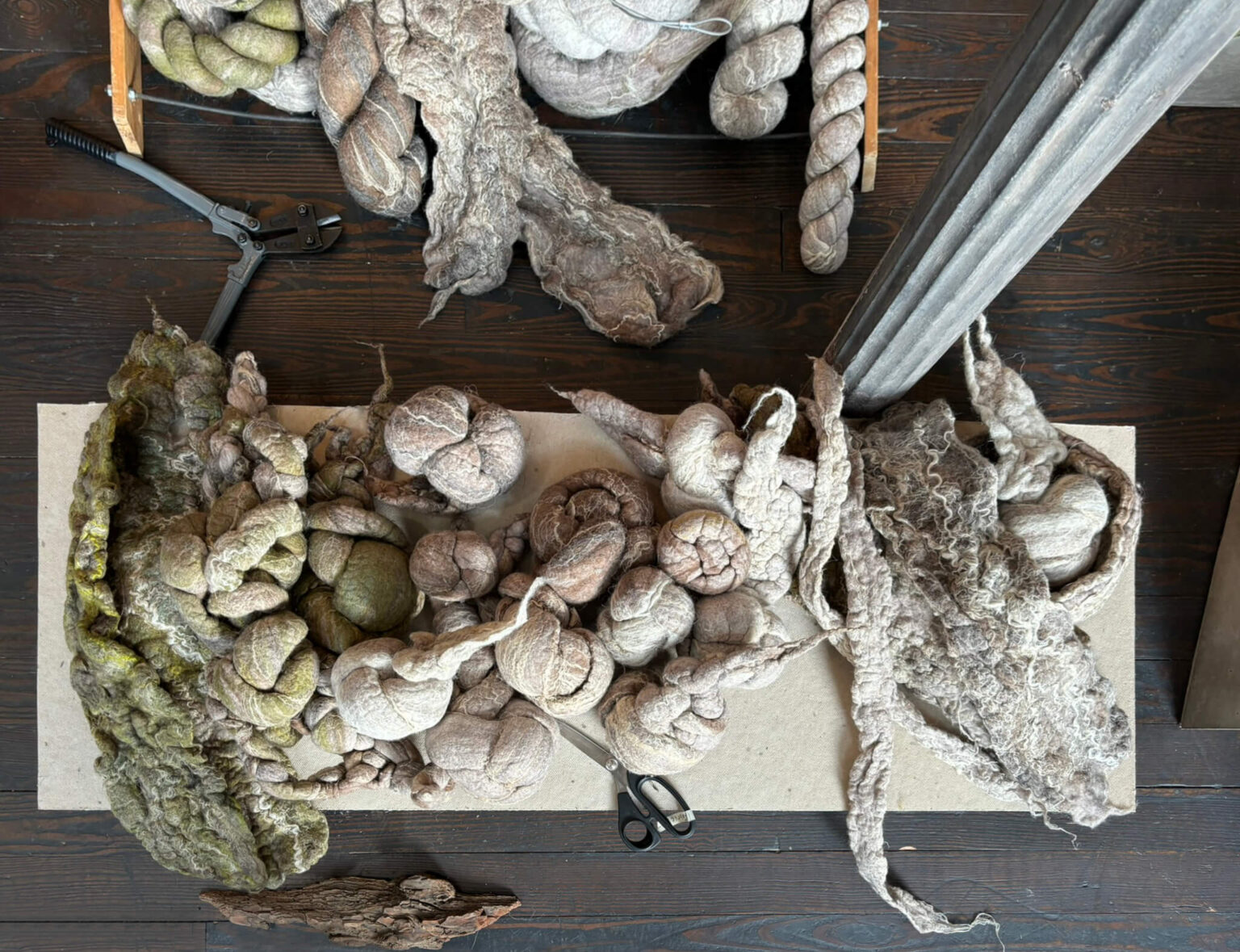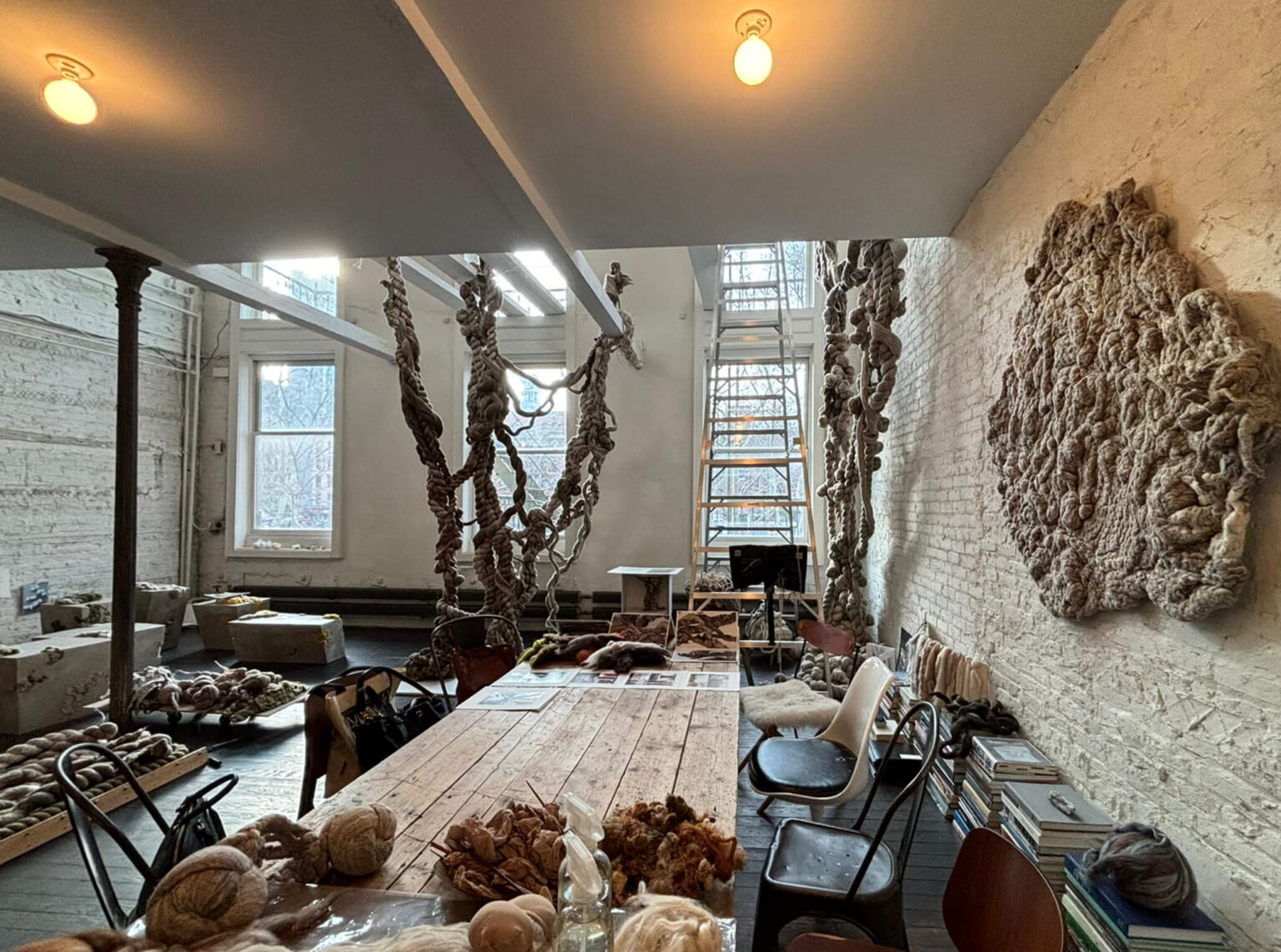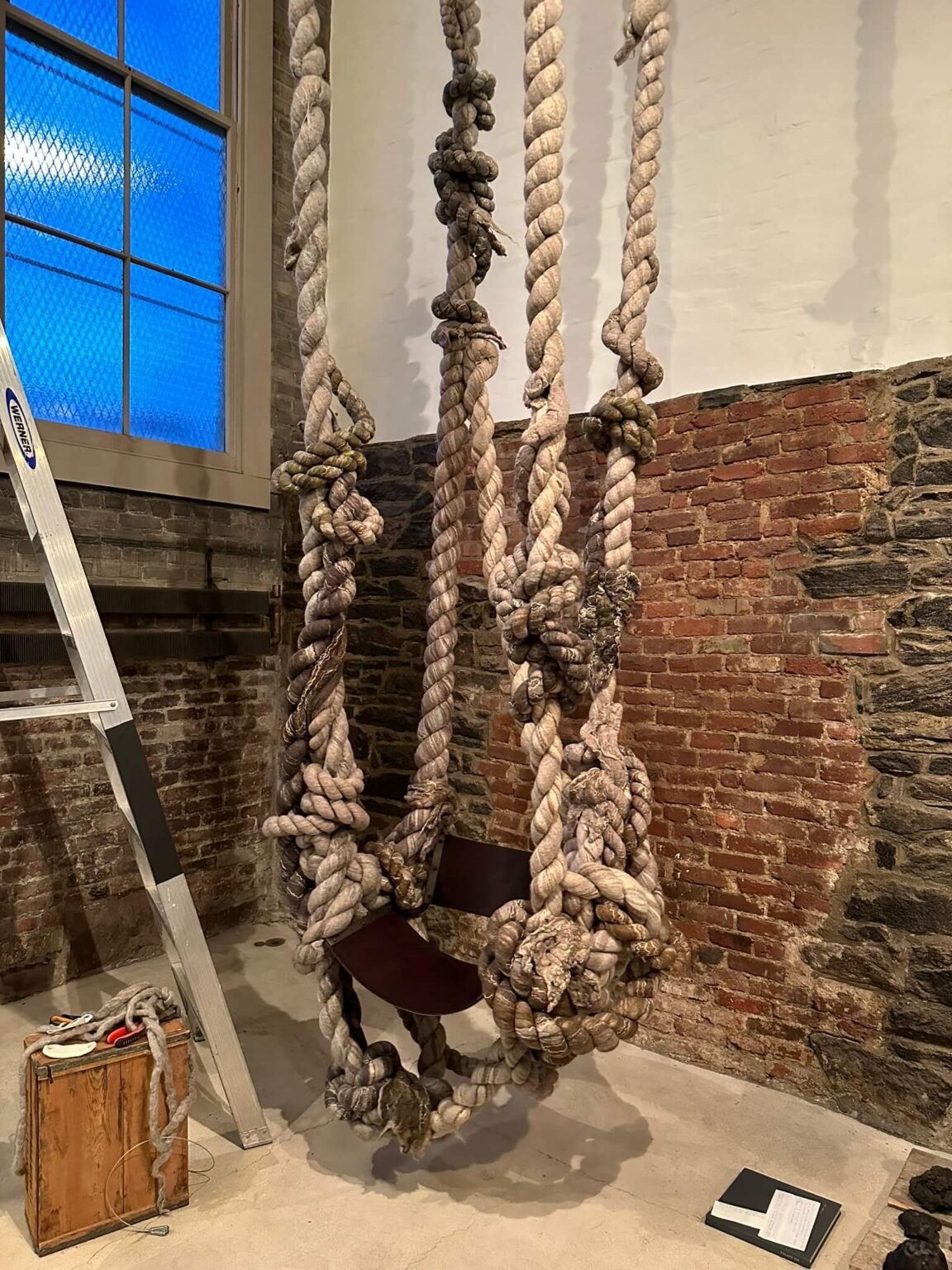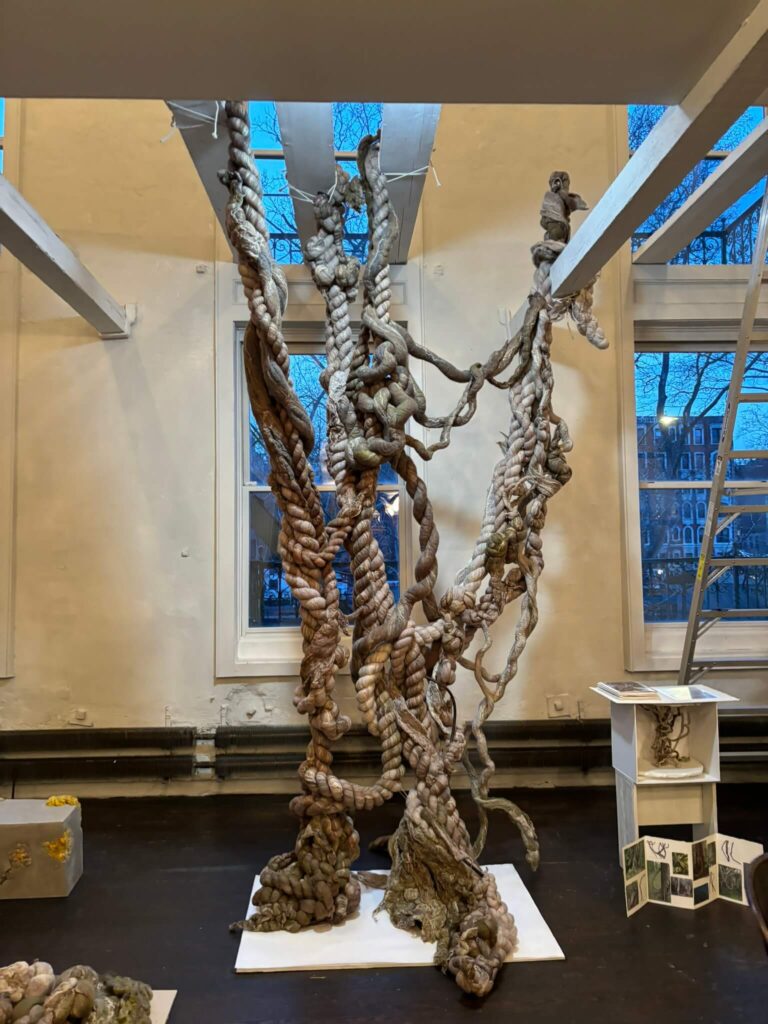
It’s common knowledge that a key factor in making a great room great is the furniture that goes into it. From the earliest phases of a project, we are thinking about furniture. When including custom pieces, as we almost always do, it’s from the beginning that we think about the vendors we’ll work with. Over the course of a project, we communicate a lot with our vendors—about what we are looking for, about our inspiration, the fabrication, the timelines, the installation. Most of our communication, however, is via email or over the phone. It’s rare that we meet with a vendor in person outside of a review once custom pieces are in production. So whenever we get an invitation to visit a studio, it’s a welcome occurrence. When textile artist Dana Barnes invited our decor team to visit her studio earlier this year, we jumped at the opportunity.
Dana Barnes began her career in fashion, designing for brands like Elie Tahari, Adrienne Vittadini and Tommy Hilfiger. After transitioning to textile design, she started working in a larger scale, her first project being a floor covering for her Soho loft. For this, she turned to wool felt, having worked with it while in fashion and being familiar with the material. Since then, as head of Dana Barnes Studio, she has been using many different techniques with wool and other exotic fibers, from felting and braiding, to crocheting, and sculpting to make her beautiful works of art. Her studio is filled with inspirations that are from nature. She has a remarkable way of taking a photograph, of a tide pool for instance, and using the colors and textures to create a piece that at its simplest is a rug, but at most feels like a very personal work of art.
Our first project with Dana Barnes was in 2012 for our Greenwich Village Townhouse. We had seen her work on display at BDDW—another of our favorite showrooms—and reached out to introduce ourselves. It just so happened that our client had a deep appreciation of textiles and textures, so Dana’s work felt like it might be a perfect fit. We started with a visit to her showroom where she walked us through her process and her beautiful workspace. At that time, she was operating out of her home in Soho. We (and our client) quickly fell in love with both Dana and her rugs, and knew we needed to incorporate them into the project. We inquired about a custom piece for our client’s penthouse, and she came back to us with a stunning 8’ version of her braided “Rolling Hills” rug in a warm brown hand-felted merino wool with hints of teal, red and yellow. Another piece we commissioned for the same project was one of the studio’s “Yard” rugs, which is a take on its “Haybale” rug. For this piece, Dana and her artists took handmade and felted textiles that were sewn and pressed together in a technique inspired by the compression of hay in its bales. The finished piece was set into the floor, concealing an access panel to an emergency hatch for the townhouse’s elevator.
It was earlier this year, after running into Dana at Salon Art + Design and again at TEFAF, that she extended David and our decor team an invitation to visit her studio on the Lower East Side. There since 2013, the space is not so new to her, but we had never visited, so of course, we said yes. And it was an amazing afternoon. The building, built in 1874 and located on Forsyth Street, was originally a synagogue and a mikvah, which is a bath used for ritual immersion in the Jewish faith. Sometime later, it was converted into living spaces and in 1963, the artists Milton Resnick and Pat Passlof purchased the property, where they lived and worked for 48 years. Dana and her husband acquired the three-story building a little over ten years ago, and it has been home to Dana Barnes Studio ever since.
Having worked with Dana and her team for many years and knowing the scale of the work they create, it is fitting that their studio is large. Taking a tour and seeing their process firsthand really underscored the necessity for a space so grand. The front area on the ground floor is where larger installations like their felted vines are staged, the double-height ceiling able to accommodate these large-scale, site-specific works that are abstract rope-like strands of twisted and knotted wool and other fine materials. The back area of the ground floor, with its original windows, has a large platform that feels like a low stage, where the studio works on pieces from their Retold series. For these works, the team creates small oil and acrylic paintings which are used as inspiration for abstract additions of infused wool, silk and other fibers onto vintage and antique rugs. Other pieces that are displayed on this platform invite visitors to interact with them, as one would in an immersive museum exhibit. On our visit, there were large wooden structures near the stage, where people were starting to braid together felted wool to be used in a different, more amorphous woven type of rug. Some were braided and some included appliques of crystals and metals. The top floor of the space is dedicated to the studio’s experimental projects and the various machinery used in their fabrication, including a large device for felting wool “bricks” that they are developing. What is really inspiring about the space overall is how so many artifacts from Milton Resnick and Pat Passlof remain, including tall wooden ladders still leaning against the walls and paint splatters still on the floors. It is impossible not to recognize how Dana has incorporated the history of the workspace and the art that was created there into the way she uses the space today.
Since our first project with Dana Barnes Studio, they have made several rugs for us, as well as a floor-to-ceiling sculpture for a beachside estate in Watermill and a custom bench for David’s apartment in UN Plaza that was produced using a technique they developed to make the felted wool look like marble or stone. In addition, we’ve used their pieces in photoshoots. An interesting characteristic of Dana and her team’s work is that everything is meant to be used and loved. Their pieces look like art, but they are also meant to be walked on and experienced. This means that they need to be for the right client—a client who appreciates the unique artistry in the pieces and the special care they require. Even having never been to Dana’s impressive Forsyth Street studio prior to our recent visit, we have long been enamored with her and her team’s work and by their ability to create so many different and unexpected pieces from one material—felt. Getting an opportunity to look behind the scenes, from the earliest phases which include inspiration imagery, photographs and sketches to the development phase with maquettes and models and onto the production phase with the actual pieces allowed us to understand her work in a truly authentic way.
